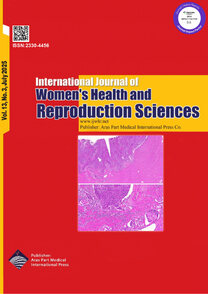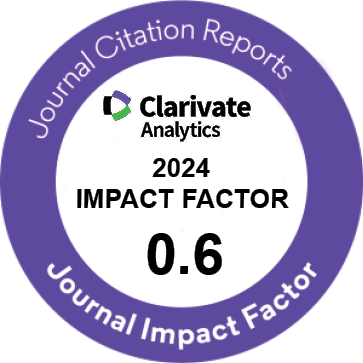| Original Article | |
| Effect of Tranexamic Acid on Intra- and Postoperative Bleeding Ratio and Complications in Placenta Accreta Syndrome: A Double-Blind Clinical Trial | |
| Kobra Shojaei1, Mahin Najafian1, Maryam Saberi Behbahani2, Reza Akhondzadeh3 | |
| 1Department of Obstetrics and Gynecology, Faculty of Medicine, Fertility, Infertility and Fetal Health Research Center, Ahvaz Jundishapur University of Medical Sciences, Ahvaz, Iran 2Department of Obstetrics and Gynecology, Faculty of Medicine, Ahvaz Jundishapur University of Medical Sciences, Ahvaz, Iran 3Department of Anesthesiology, Faculty of Medicine, Pain Research Center, Ahvaz Jundishapur University of Medical Sciences, Ahvaz, Iran |
|
|
IJWHR 2024; 12: 136–141 DOI: 10.15296/ijwhr.2023.41 Viewed : 5337 times Downloaded : 4374 times. Keywords : Placenta accreta, Tranexamic acid, Cesarean section, Hemorrhage |
|
| Full Text(PDF) | Related Articles | |
| Abstract | |
Objectives: Placenta accreta syndrome (PAS) is one of the main problems of women during childbirth, also the most important cause of maternal morbidity and mortality. Tranexamic acid (TXA) is widely used to reduce blood loss and deaths due to bleeding in trauma patients and patients with postpartum hemorrhage. This study aimed to investigate the effect of TXA in reducing bleeding and complications during and after surgery in women with PAS. Materials and Methods: This double-blind clinical trial was performed on 46 women who underwent cesarean section with PAS diagnosis. The participants were randomly assigned in two groups (n=23/each): the TXA group received 1 g TXA intravenously and the control group received 50 mL of normal saline immediately after the surgery. Then, the postoperative estimated blood loss (EBL), amount of blood products transfusion, complications during and after delivery, including the need for hysterectomy, duration of hospitalization, and the number of days staying in the intensive care unit (ICU) were compared between the two groups. Results: The mean EBL during and after surgery in the TXA group was significantly lower than the control group (P < 0.0001). The TXA group received fewer blood products, including packed red blood cells (PRBCs), fresh frozen plasma (FFP), and platelet. The duration of surgery, duration of hospitalization, and the number of days in the ICU were significantly lower in the TXA group (P < 0.001). Hysterectomy was observed in 10 participants of the TXA group and 13 women in the control group, but the difference was not significant (P = 0.556). Conclusions: TXA administration effectively reduced postpartum hemorrhage, the need for postpartum blood transfusion, the duration of surgery, and the duration of hospitalization in women with PAS. TXA is a practical, inexpensive, safe, and readily available treatment and can be recommended as a prophylactic intervention to prevent blood loss in women with PAS. Trial Registration: https://www.irct.ir/, identifier: IRCT20201003048909N1. |
Cite By, Google Scholar
Google Scholar
PubMed
Online Submission System
 IJWHR ENDNOTE ® Style
IJWHR ENDNOTE ® Style
 Tutorials
Tutorials
 Publication Charge
Women's Reproductive Health Research Center
About Journal
Publication Charge
Women's Reproductive Health Research Center
About Journal
Aras Part Medical International Press Editor-in-Chief
Arash Khaki
Mertihan Kurdoglu Deputy Editor
Zafer Akan























